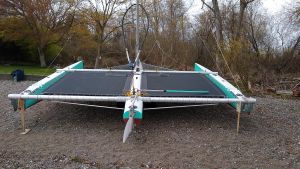
Giant tramps.
Jim's home | Trimaran home | This boat's home
My friend Dave Sutter was kind enough to let me use his Singer commercial sewing machine with a walking foot. It's a beast. I did sew through my finger once and it took months to heal. I told Dave about it. He chuckled and said, "Yeah that machine's seen a lot of blood."
I can't remember where I bought the netting, but I think it was this place. They sell netting for actual trampolines, not boats. However on the phone, they told me that lots of people buy their netting for catamarans. It was much cheaper than netting from marine fabric places. You could get calendared or non-calendared mesh. Calendared mesh is run through two hot rollers in the last stage of production, which melts the materials and gives it a smooth and glossy appearance. However it weakens the fabric a bit and makes is more slippery when wet, so I chose non-calendared.
I initially sewed rope into some edges of my tramps to make bolt ropes. But I found that the bolt ropes pulled out of the aluminum tracks. I did have different sizes of aluminum tracks (metric vs. US), which was probably the real issue there. After reading this excellent article on how to lace trampolines I decided to use slug slides in the aluminum tracks instead of bolt ropes. This required sewing a sleeve in the edges of the tramps for plastic pipe (UV resistant electric conduit) to go into, and to melt slots for the Dyneema laces to go through and around the pipes. I used 1/8" Dyneema line for the lacing.

Giant tramps.
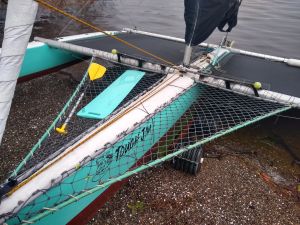
I bought some polypropylene netting on Craigslist and used it for the sides of the bow. Garden hose covers the steel wires at the outer edge for safety. The inner edges are tied to bow eyes that I mounted to the sides of the center hull (vaka) here.
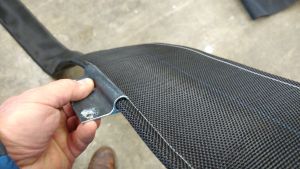
Checking how a piece of my flange fits a bolt rope that I had sewed into my netting. This didn't work so well.
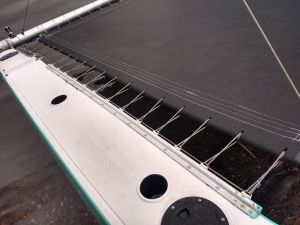
View showing the outer edge of a tramp laced to the slug slides in the track on the ama. This does work well.
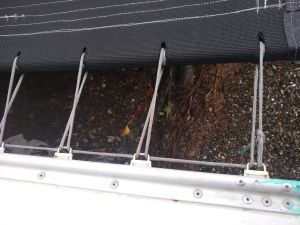
A close up lacing. You need to wear gloves when tightening the laces. It's hard on your hands.
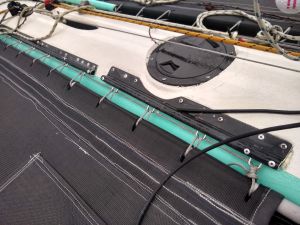
Inside edge of a tramp where it meets the vaka.
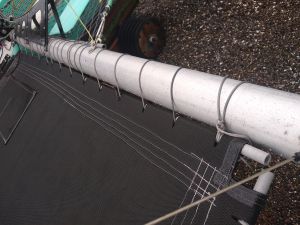
Front edge of a tramp where it meets the crossbar (aka). I simply wrapped the lacing around the aka.
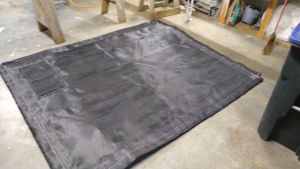
A tramp on my friend Dave's garage floor. The tramps actually have 2 layers of netting in hopes of them lasting longer. They're pretty stiff and were a real chore to manipulate when sewing.
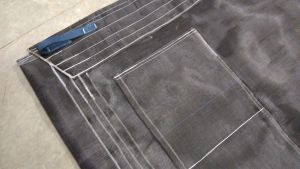
Pocket sewn in for lines.
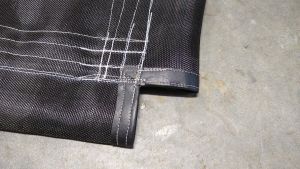
Corner detail with vinyl protective end pieces.
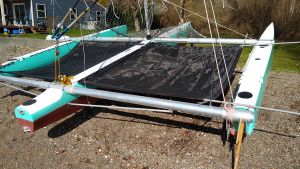
The tramps loosely in place before lacing.
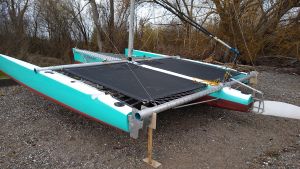
All laced up, nice and tight.